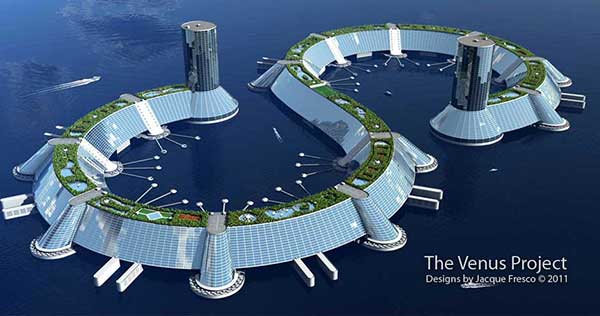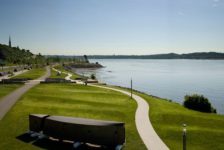As the modern issues of global warming and the economic crisis continue to escalate, people are trying to find solutions to delay negative effects or entirely alter the source of the problem. Most don’t want to face the facts. Temporary solutions are a popular because a total and complete change seems insurmountable. But that is exactly what Jacque Fresco proposes in his elaborate and impressive “Venus Project”. The main aim of the project is social change towards the ultimate goal of sustainable, equal and prosperous living. The world in the Venus Project would be resource-based and would eliminate the current monetary and political framework. Ideally, it would provide a high quality of life for everyone and allow for humanity to live in an ecological and non-damaging way. This would mean changing how society itself operatesand the principles we have based our civilization on, including architecture, living habits and surroundings. The basic design idea for houses in the Venus Project would be based on adaptability and flexibility. These mass-crafted homes would be built from pre-fabricated materials that are weather resistant and eco-friendly. Houses integrated into the natural surroundings, whether it’s urban, woods, islands, sea or plains, would be unique to their context and the design would meet the specific needs of its owners. Jacque Fresco’s vision presents geometrical shapes with flowing lines, something you might find in a 1980s sci-fi flick. Clean white lines and large expanses of glass endow the outside, as well as technological features such as photovoltaic panels and thermo panes that control the level of light. These extra-safe, mass-produced and quick-to-build houses represent the future in civil design.

Center city ring

High-speed trains play a critical role in the framework of the city
 His design ideas also incorporate efficient transport systems in an attempt to reduce pollution and delays. Of course, high-speed trains are first on the list, and sci-fi inspired detachable modules, which can be picked up while the train is moving would be featured. This practice conserves energy and makes for better logistics. Aircrafts will have different kinds of propulsion, from regular propellers to magnetic and hovering devices, even incorporating air vortex columns to lift up passengers. Cars will be eco-friendly, long range and high-speed, either with wheels or levitation devices. Voice recognition and self-monitoring systems will make for a practical and safe means of travel.
His design ideas also incorporate efficient transport systems in an attempt to reduce pollution and delays. Of course, high-speed trains are first on the list, and sci-fi inspired detachable modules, which can be picked up while the train is moving would be featured. This practice conserves energy and makes for better logistics. Aircrafts will have different kinds of propulsion, from regular propellers to magnetic and hovering devices, even incorporating air vortex columns to lift up passengers. Cars will be eco-friendly, long range and high-speed, either with wheels or levitation devices. Voice recognition and self-monitoring systems will make for a practical and safe means of travel. 
Coastal city rendering
This article was originally submitted to Landscape Architects Network
Published in Blog









